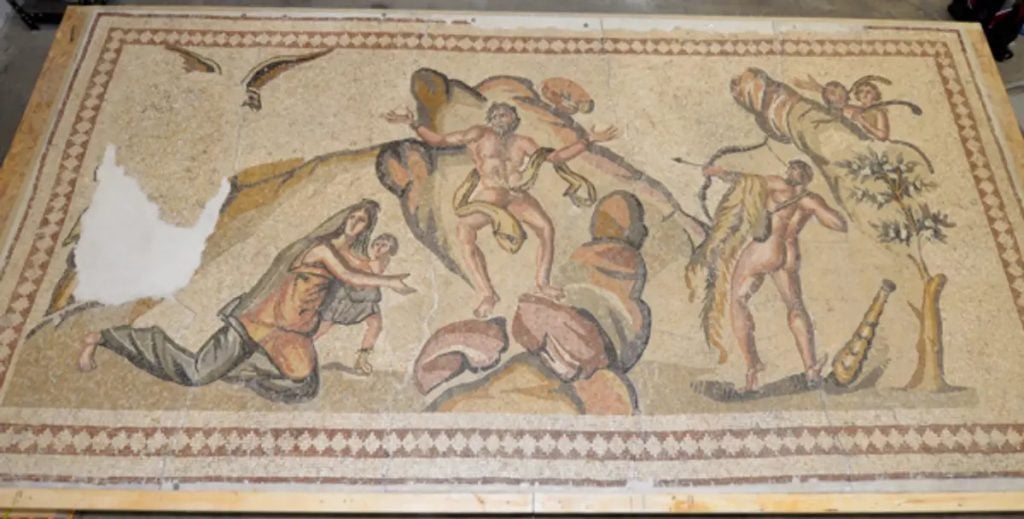Crime
A California Man Is on Trial for Allegedly Importing an Ancient Roman Mosaic That Was Stolen From Syria
The accused's lawyer now contends that the mosaic is actually a fake.

The accused's lawyer now contends that the mosaic is actually a fake.

Sarah Cascone

A man is on trial in California facing charges that he illegally imported an ancient Roman mosaic looted from Syria during the country’s civil war. The Justice Department has accused the collector, 56-year-old Mohamad Yassin Alcharihi, of claiming on import forms that the artwork, worth hundreds of thousands of dollars, was worth just $587—but his defense attorney now insists that the ancient artwork is a fake.
Alcharihi purchased the mosaic from Turkey in 2015, as part of a larger shipment of dozens of vases and two mosaics that he indicated was worth $2,200. He later admitted to having paid $12,000 for the lot.
The evidence against Alcharihi includes a text message with a photo of the mosaic sent by a Syrian associate in early 2015 that included a picture of the mosaic. He also admitted in court filings before being indicted in July 2020 to spending $40,000 to restore what he described as a “Turkish mosaic”—but claimed he imported it “as trash,” as reported by Courthouse News.
The mosaic that has since landed Alcharihi in legal trouble is 18 feet wide and eight feet tall, and weighs in at 2,000 pounds. It depicts scenes from the myth of Hercules. The FBI raided Alcharihi’s Palmdale, California, home in 2016, seizing the piece, which a government expert identified as a 2,000-year-old Byzantine-period mosaic that is stylistically consistent other ancient works hailing from the region around Idlib, Syria.
But while the expert will testify at the trial to the work’s authenticity—including the advanced age of the materials and their origins in the Eastern Mediterranean—Alcharihi’s lawyer, federal public defender Ashley Mahmoudian, challenged the mosaic’s authenticity during opening arguments last week, and blamed the falsifications on the import form on an inexperienced customs broker who made multiple errors.
“Mr. Alcharihi isn’t an art expert. He didn’t see the mosaic prior to its arrival in the U.S.,” she said, arguing that her client was simply a man looking for a promising business venture. “The mosaic is a fake.”
Last week, the defense presented testimony by New York art dealer and antiquities expert Randall Hixenbaugh. He questioned some of the iconography in the mosaic, especially a depiction of a woman in pants, which he told the court was strange because “it’s a symbol of male barbarism to wear trousers,” Courthouse News reported.
Hixenbaugh did not outright declare the work a fake, but estimated it was worth only $30,000—less than what Alcharihi had spent on restorations. While Hixenbaugh did not examine the mosaic in person, the government won a motion in January to display it as evidence during the trial, rather than asking the jury to rely only on photographs of the monumental work.
Day four of the trial, which is being overseen by Judge George H. Wu, is today in the Central District Court of California.
More Trending Stories: